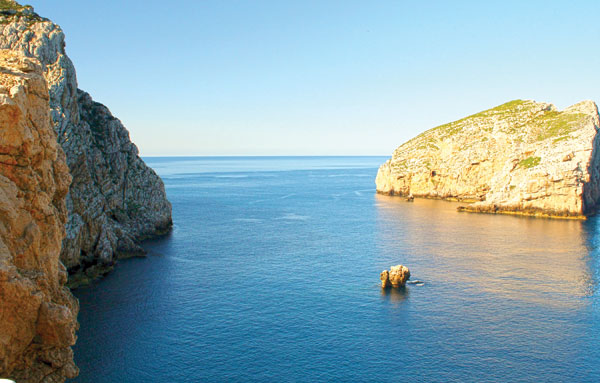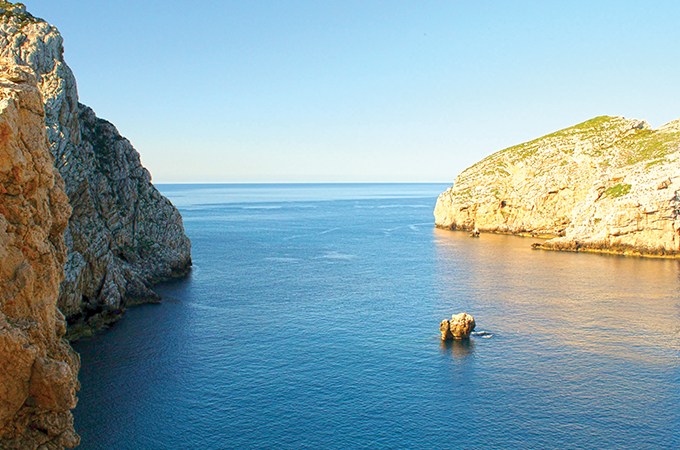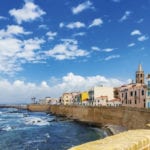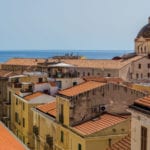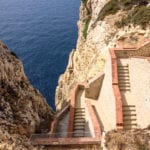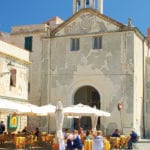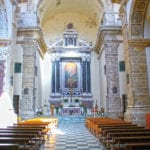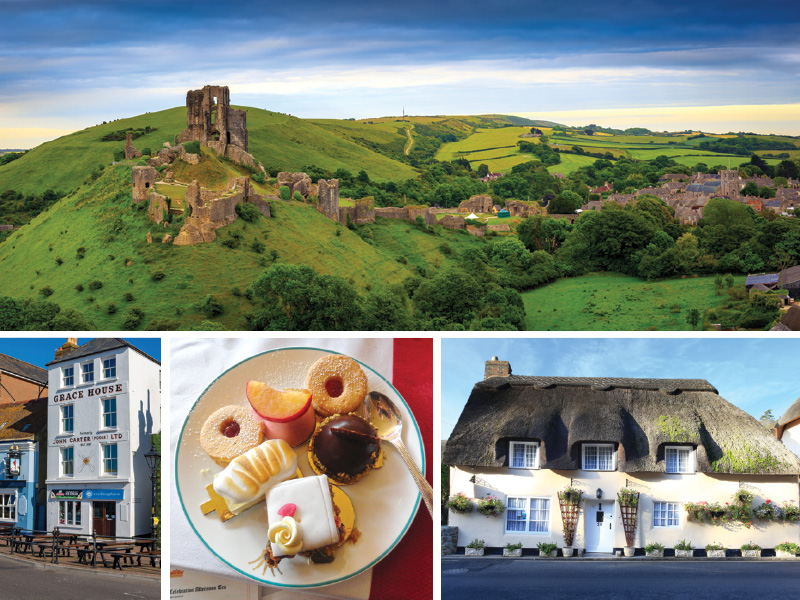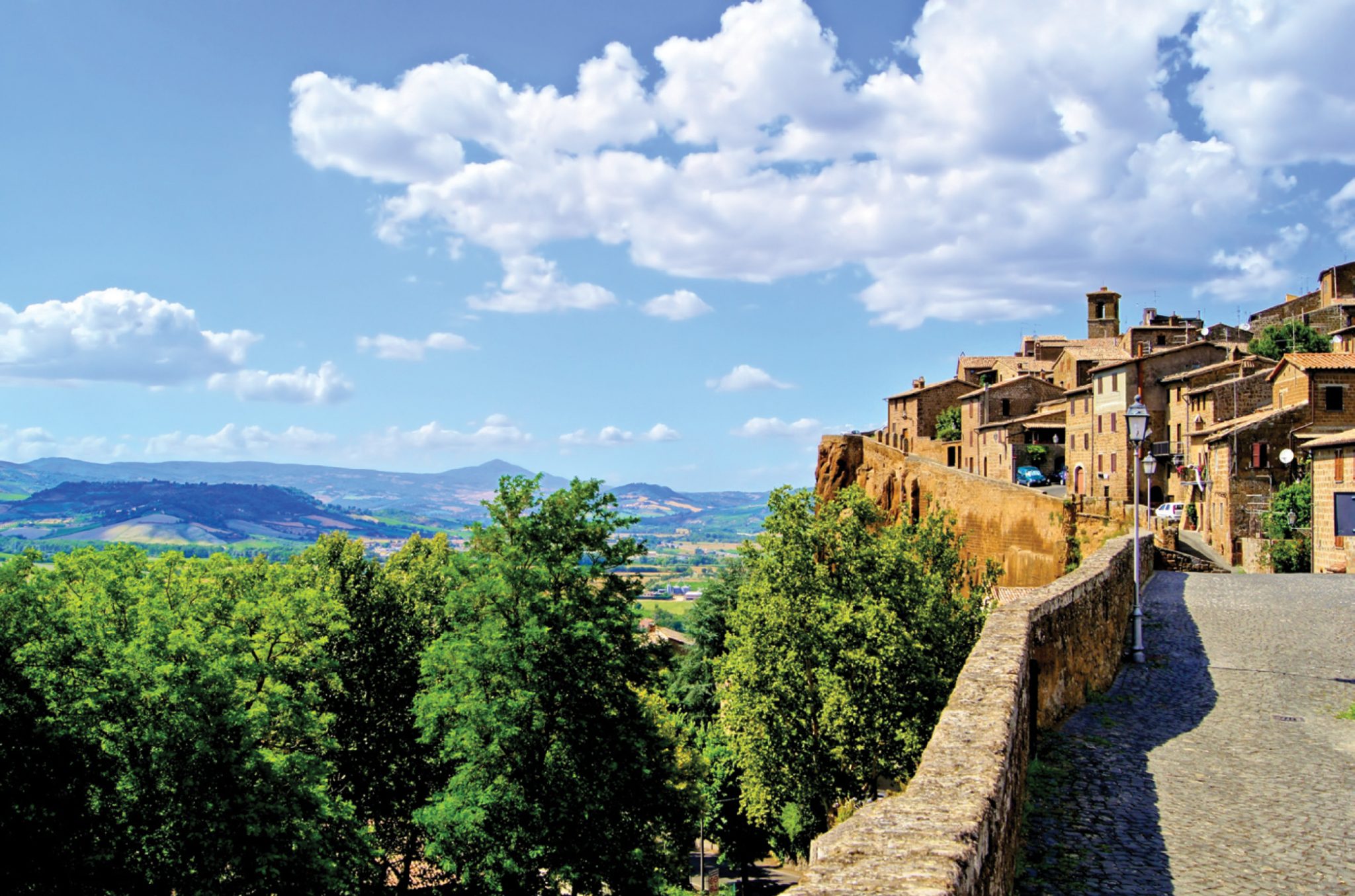It’s easy to see why so many people have laid claim to the island of Sardina over the centuries. The second-largest island in the sparkling Mediterranean after Sicily, it is 8,300 square miles of beautiful, charming beaches, cliffs, mountains and caves. And you share it with only one million inhabitants! Sardinia also is home to some interesting rarities: archeological ruins called nuraghes, albino donkeys, coral-rich caves and a renowned sheep’s milk pecorino cheese industry.
We learned that and more during a Silversea cruise of the Mediterranean that included in-depth historical context for several of the scenic islands. In Sardinia, you’ll want to start with a walk through the Old Town section of Alghero, reputedly the island’s most beautiful city. That’s where visitors will immediately notice a series of towers—actually their remnants—that served as watchtowers against invasion. We were told that one of them, the Porta Terra, was funded by taxes on the island’s Jewish community before its 1492 expulsion by the Spanish. Two others, Dog Tower and Sira Tower, were subsequently used by the Spanish as holding cells (and torture chambers) for dissidents, of which there were many, since the Sardinians never assimilated fully into Spanish culture.
The island was part of the Roman Empire in 200 BC, but signs of a very early Nuraghic culture are everywhere. The most impressive of these is Nuraghe Palmavera, a series of large stone rooms and animal pens about a 20-minute drive from Alghero. Sardinia’s geography made the island a pawn in the economic and political shifts of the Mediterranean area for centuries. Buffeted between Spanish and Italian influences, Sardinia even spent a decade (1708 to 1718) under Austrian rule.
Alghero’s fascinating seaside walls and towers date to the 12th century, when a powerful Genoan trading family, the Dorias, formed a pact with the city, promising to build a wall and fortress for protection in exchange for the right to stay there during trading runs. By the 1500s, Sardinia was part of the papal state, and then it was traded to Spain in exchange for Sicily, remaining under Spanish influence for 400 years. But the Sardinians eschewed the union, claiming that mainland Spaniards treated them like subordinates. Yet the Spanish/Catalan influence is evident all over the island, and the architecture is primarily Spanish, similar to that in the Balearic Islands, and many Catalan dialects are spoken here.
With a dramatic coastline and steep cliffs, the limestone promontory of Capo Caccia is about 20 minutes from Alghero. The roads there were the site of the famous chase scene in The Spy Who Loved Me, and the movie’s submarine scene was shot in the stunning bay below. Nearby Grotta di Nettuno, one of the island’s most visited sites, is a deep cave with 50-meter stalactites and stalagmites discovered only 200 years ago. In fact, this area’s caves are so clandestine that they were used as storage bunkers during WWII.
Alghero’s beaches, which once were covered with algae that had washed up onto the shore, are thought to be the origin of its name, as the word alger means algae. It protected the sand from being blown away during the powerful mistral winds that assault Sardinia, thanks to high pressure in the Atlantic between Spain and France and low pressure around the Gulf of Genoa.
Those winds, and all of the invasions, go a long way in explaining the Sardinian symbol, the wild boar. It is said the people here are especially tough (and proud of it) because they’ve had to be. Geographically, Sardinia has a wild, untamed character thanks in part to its forbidding cliffs and its thick network of bushes called maquis, which are nearly impossible to penetrate. On the plus side, more than 32 varieties of wild orchid grow here! As a people historically buffeted by the superpowers around them, the Sardinians still have managed to preserve their own culture and even their own Sardo language.
As for the sites, the churches in Alghero’s Old City should be on every tourist’s itinerary, as they are distinctly Spanish country style. For the most part, they do not have the Moorish flavor of churches in the nearby Andalusia region. And they are not grand. Rather, they are made with indigenous materials like limestone and wood and are incorporated into the streetscape, where they appear nestled amid houses and shops.
But that is not to say they aren’t impressive. Their high, vaulted ceilings and gilded wooden altars have a quiet dignity and piety. The grandest of them, Santa Maria, has massive pillars on the exterior and serves as the archbishop’s cathedral. Construction started in 1570 in the Catalan-Gothic style, but it was finished in 1730, so its nave and side aisles are late-Renaissance. Its octagonal bell tower is topped by a pyramidal spire, ostensibly to represent the Holy Trinity, that juts above the Alghero landscape to help you get your bearings from anywhere in the medieval town.
The Church of San Miguel, named for the patron saint of Alghero, has a decorative tiled dome visible from just about anywhere in Old Town Alghero. And the Church of San Francesco, plain on the outside, is attached to a working Franciscan monastery, and you sometimes can see the monks in their robes enter to light candles. Interestingly, the friars operate a small bed and breakfast on the premises, where guests can stay in monastic simplicity. Book ahead, as it’s purportedly quite popular. While it may not be as exciting as taking those S-curves in a Lotus Esprit, how many people can say they’ve slept in a monastery? Or walked the same streets as 007, for that matter.
if you go …
eat | Andreini in the old town focuses on Sardinian specialties like local roe, tuna, lamb and desserts with figs. Another spot with Sardinian fare popular with locals is La Cueva, located in a building with ties to the 8th century. Specialties include roast suckling pig, grilled lamb and sebadas (or seadas), the traditional Sardinian dessert of deep-fried ravioli soaked in honey.
stay | The hands-down favorite is Villa Las Tronas, an elegant hotel with history near Alghero. On a promontory over the sea, this place was the vacation choice of Italian royalty prior to WWII and offers location and luxury starting at about $250 a night. The monastery’s rooms at Hotel San Francesco are in the heart of old Alghero, grouped around a cloister from the 1300s! Don’t expect luxury (or TVs in your room), but for unique memories, this is it! Prices start around $110.
play | Tour the grotto, easiest done by boat, and walk the old city. Take an evening paseo or passeggiata down the promenade in the Spanish and Italian tradition, and contemplate the old watchtowers and their history. Visit the Church of San Francesco when the monks are present, and walk along the old wall to admire the amazing cliff and sea views.
shop | Anchored in Italian and Spanish traditions, Sardinia is known for its leather goods—shoes and purses—and for the red coral so abundant along its coastline. In an interesting bit of trivia, it is also where chewing gum originated, from the mastik trees indigenous to the island. Many fine wines are produced here; in particular, it’s known for its moscato, the delicious, bubbly, sweet white wine the Italians call Asti.
Photo above: Marc Weiner
